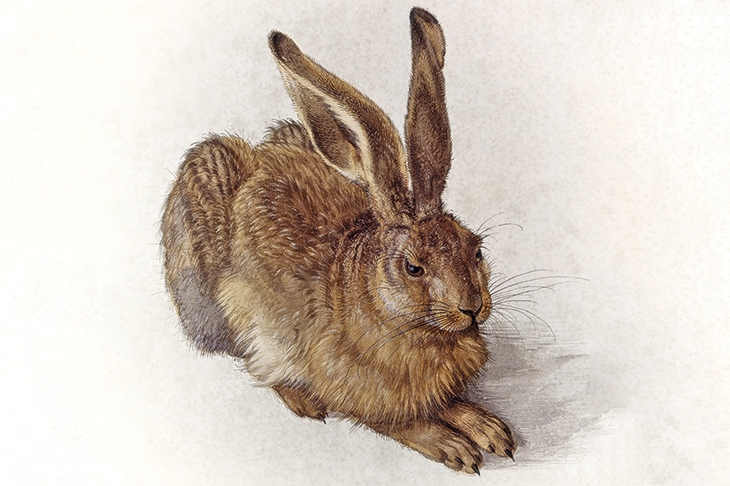The numbers of the dear old mountain hare in England are becoming perilously depleted. A researcher, Carlos Bedson, has suggested there may be only 2,500 left in the Peak District. Warmer weather seems to be finishing them off. It is time to appreciate them and their cousins, the brown hare, more and to look after them.
I was in my thirties when I’d head up on to Saddleworth Moor with my father-in-law to watch the white-furred mountain hares. We didn’t say much, we just took in the old magic of those beautiful creatures.
I’m not the only one to love hares. That great English poet and hymnodist William Cowper suffered from severe depression and many breakdowns. It was adopting three leverets as pets that began to turn the mental tide. Puss, Bess and Tiney worked their way into the troubled poet’s heart. Puss would sit on his lap, nibble his hair and allow himself to be carried. He’d also drum on Cowper’s knee with his paws if he wanted to go and play in the garden.
The hare has a rare and ancient pedigree. You can trace back the Irish hare to at least 30,000 years ago. But the British mountain hare tops that. Bones between 114,000 and 130,000 years old have been found.
It is no accident that the hare has played such a part in our national consciousness. Their bulging eyes, skittishness and beauty seem otherworldly. They don’t have burrows to hide in, so they rely on sheer speed and the ability to perform instantaneous hairpin turns. That jumpiness and alertness is comical and also just a bit sinister.
Hares have a strong history in art. They are in early Christian art icons and friezes, but no one is quite sure why. The print of Albrecht Dürer’s micro-observed ‘Young Hare’ (1502) has found its way on to the walls of many German households over the centuries.
It was Celts with their love of nature who provided the most touching story about the creatures. St Melangell is the unofficial patron saint of hares. She came to Powys from Ireland in the 7th century and became a hermit to escape an arranged marriage. One day the Prince of Powys called Bychwel was hunting hares with his dogs. One poor hare took refuge under Melangell’s skirts and so impressed was Bychwel with the hermit’s piety that he gave her land, which she used to set up a community of women.
It is hard to put the witchy appeal of the hare into the right words, but the poet John Clare managed it. Clare was an extraordinary character, one of the few genuinely canonical working-class poets and a countryman. He also, like Cowper, suffered terribly with his mental health and he spent his last 23 years in an asylum. I wonder if the hare’s strangeness, lunar madness and association with lunacy is what has helped troubled souls feel such an affinity with them.
When Clare wrote ‘Hares at Play’ at the end of the 19th century, there were four million brown hares in Britain. Clare sees ‘the timid hares’ throwing their daylight fears away. ‘Out they sturt again and round the hill.’ They are ‘like happy thoughts [that] dance and play’.
Happy thoughts indeed. It took two troubled geniuses at war with their own thoughts to remind us of a beautiful, odd and magical creature that we ought to treasure a good deal more.






Comments